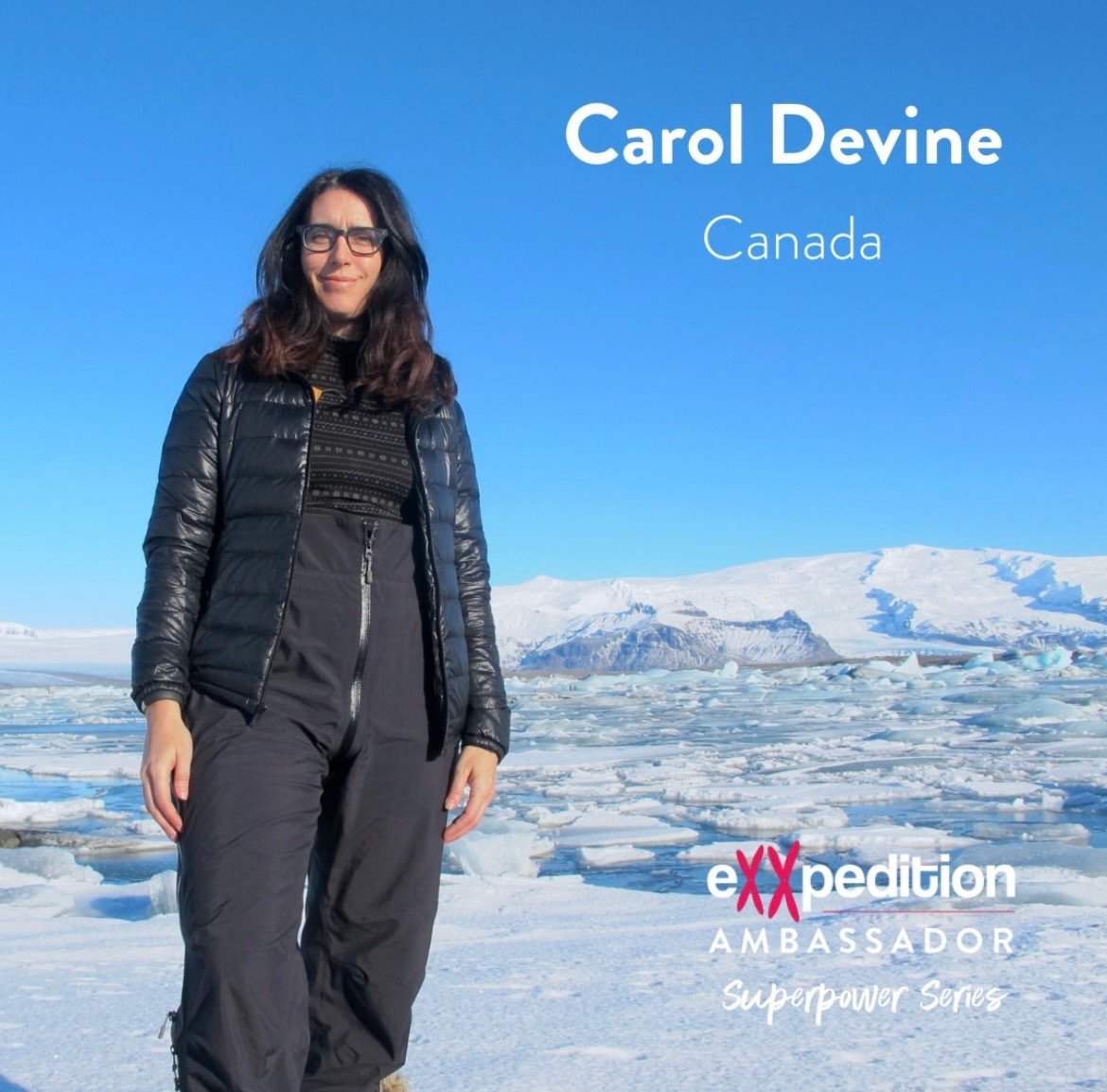Carol Devine is featured in the women in plast pollution science and adventure eXXpedition Ambassadors Superpower spotlight series bringing microplastics, climate change, sailing, polar regions and journeying outside your boundaries stories together.
“Meet Carol, a humanitarian, researcher and writer, who joined Leg 2 of eXXpedition’s Round Britain voyage. Carol works for Médecins Sans Frontières (MSF) on migration, climate and health issues. During our discussion she recounts her experiences onboard and reflects on the power of storytelling and the importance of it within the medical and humanitarian space.”
Excerpt:
CAN YOU TELL ME A BIT ABOUT YOURSELF AND HOW YOU WOULD DESCRIBE YOUR SUPERPOWER?
I am a social scientist and writer currently working on climate, health and their interconnections, encompassing oceans, forests, food systems, medicines, humanitarian issues, conflict, migration, culture and more. These cascading crises disproportionately affect communities and Indigenous groups who have long stewarded the land and today 80 percent of the world’s biodiversity.
I also do conceptual art. I believe in the importance of storytelling, speaking with affected communities, working with scientists, artists and policymakers. It’s all very well having the science, but how do we translate it? How do we ensure people are able to understand the science and how it is applicable to them? For me, art is a storytelling tool that allows people to make sense of the science. And that’s why I believe it’s my superpower because I can help connect ideas and people!
“It’s all very well having the science, but how do we translate it?”
WHAT ARE YOU WORKING ON AT THE MOMENT?
I’m currently writing a piece inspired by my experience with MSF at COP27. Having all the pavilions sit alongside each other and listen to their concerns and the actions they are taking felt like a very powerful form of diplomacy to me. It got me thinking about the voice of the ocean. Who speaks for the ocean? What does its advocacy look like?
This visit also gave me the opportunity to see Sharm El Sheik’s surprisingly resilient and beautiful coral and ocean life up close. I’m going to create a visual piece to share my experience in the Red Sea, and some of the advocacy questions also inspired by the Ocean Pavilion and the climate conference itself.
HOW DID YOU GET INVOLVED WITH EXXPEDITION?
I had recently returned from Antarctica from a Women in Science expedition. A journalist from Deutsche Welle (DW) in Germany contacted me about my previous environmental work in Svalbard and a related exhibition on it, and about a civilian Antarctic cleanup I’d led in 1995/96 for a story. He mentioned the work of eXXpedition so I did some research, was immediately enamoured and put my application forward!
eXXpedition’s impactful approach of not only collecting plastic and water samples, but partnering with research institutions and organisations, doing local clean ups, meeting with stakeholders gave me a heightened sense of connection. Engaging with multiple key factors meant that we weren’t just there pontificating and doing research, but collaborating and bringing different pieces of the puzzle together!



























